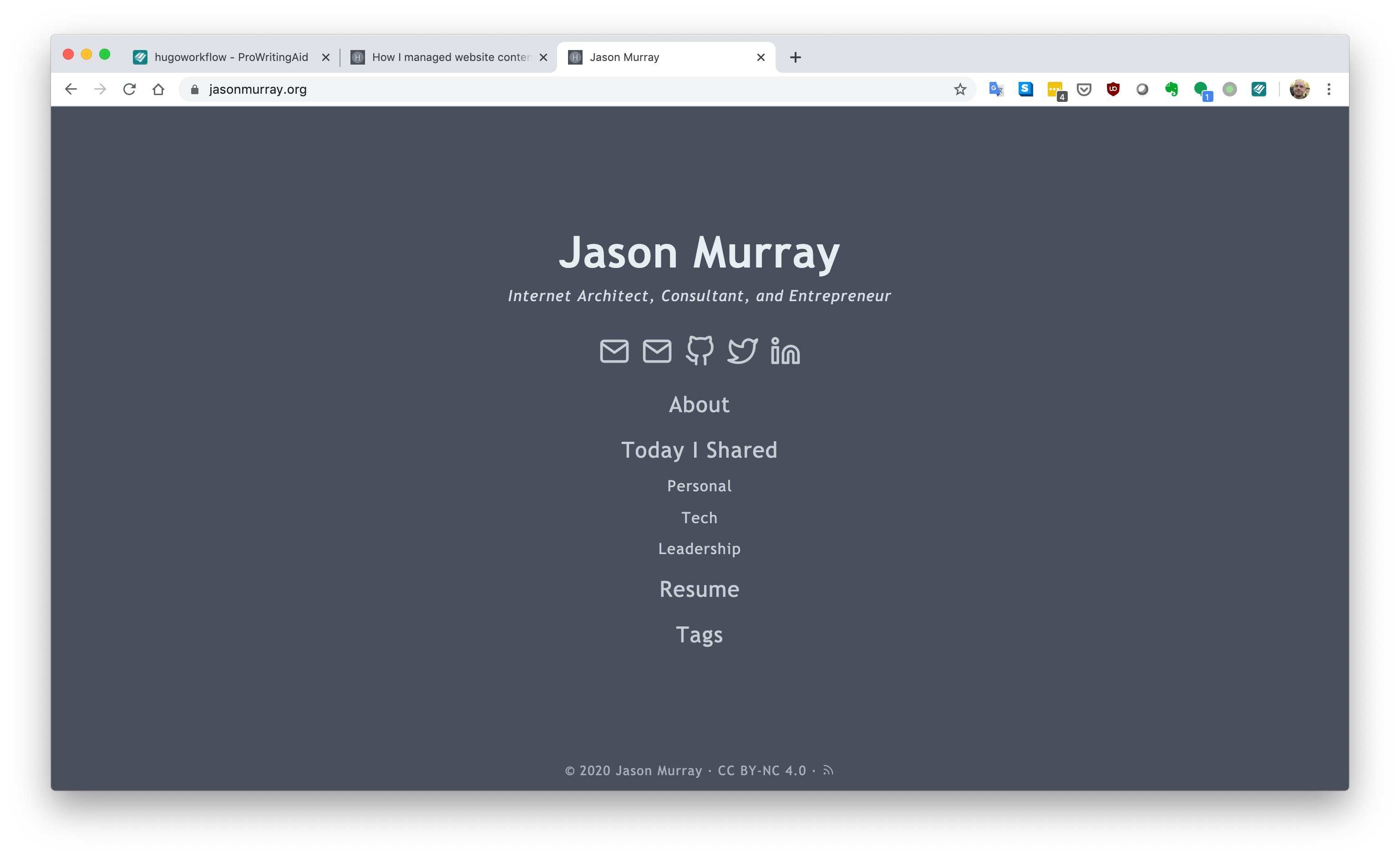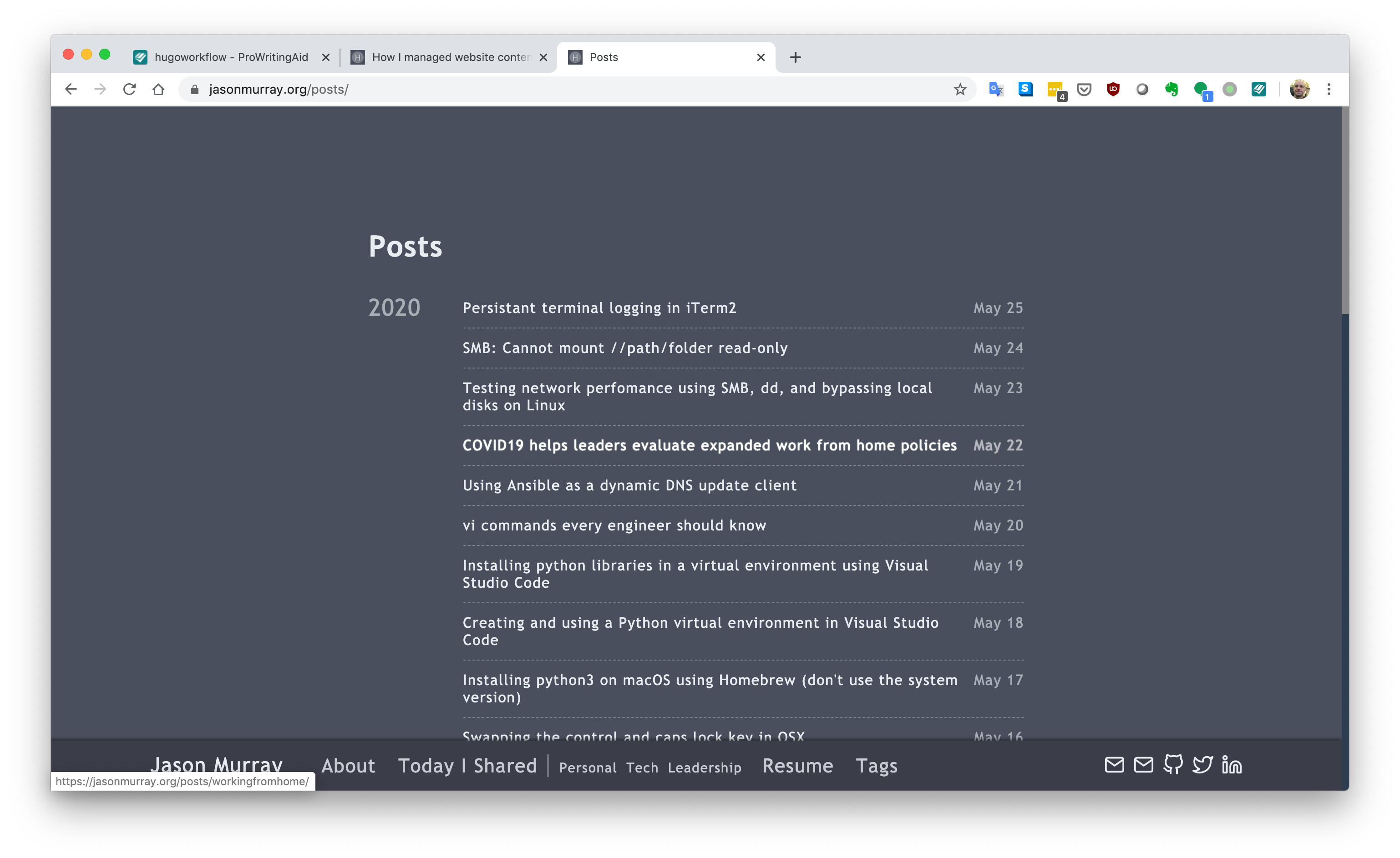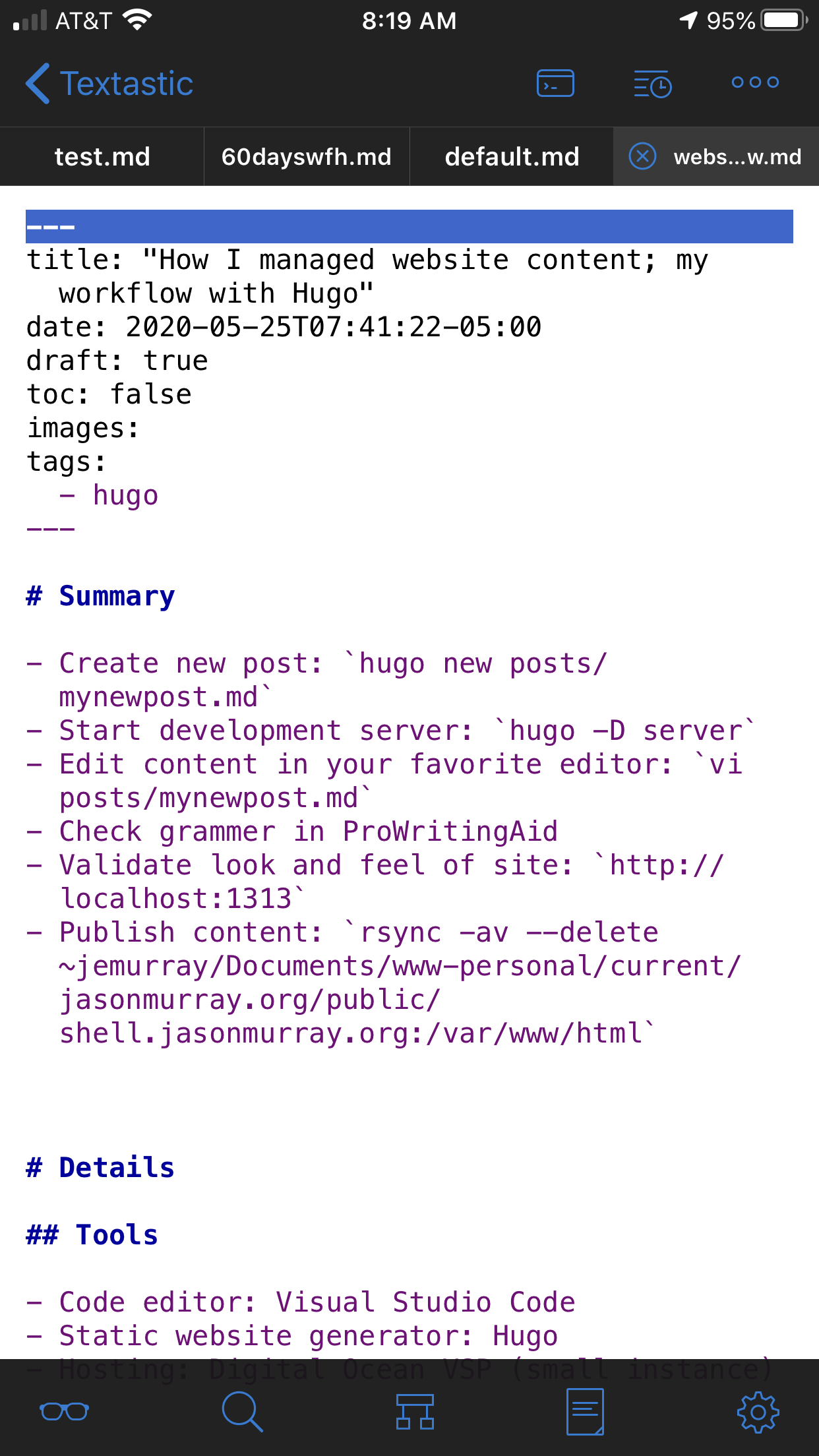How I managed website content with Hugo and text editors
Summary
- Create new post:
hugo new posts/mynewpost.md - Start development server:
hugo -D server - Edit content in your favorite editor:
vi posts/mynewpost.md - Check grammer in ProWritingAid
- Validate look and feel of site:
http://localhost:1313 - Publish content:
rsync -av --delete ~jemurray/Documents/www-personal/current/jasonmurray.org/public/ shell.jasonmurray.org:/var/www/html
Details
Tools
- Code editor:
vi,Visual Studio Code,Textastic, etc. - Static website generator: Hugo
- Hosting: Digital Ocean VSP (small instance)
Create new post
Everything starts out in either a terminal or Visual Code Studio (VSC). In this post, I will switch between iTerm2 and VSC terminals and various editors depending on need.
Open a new terminal in VSC: Terminal -> New Terminal
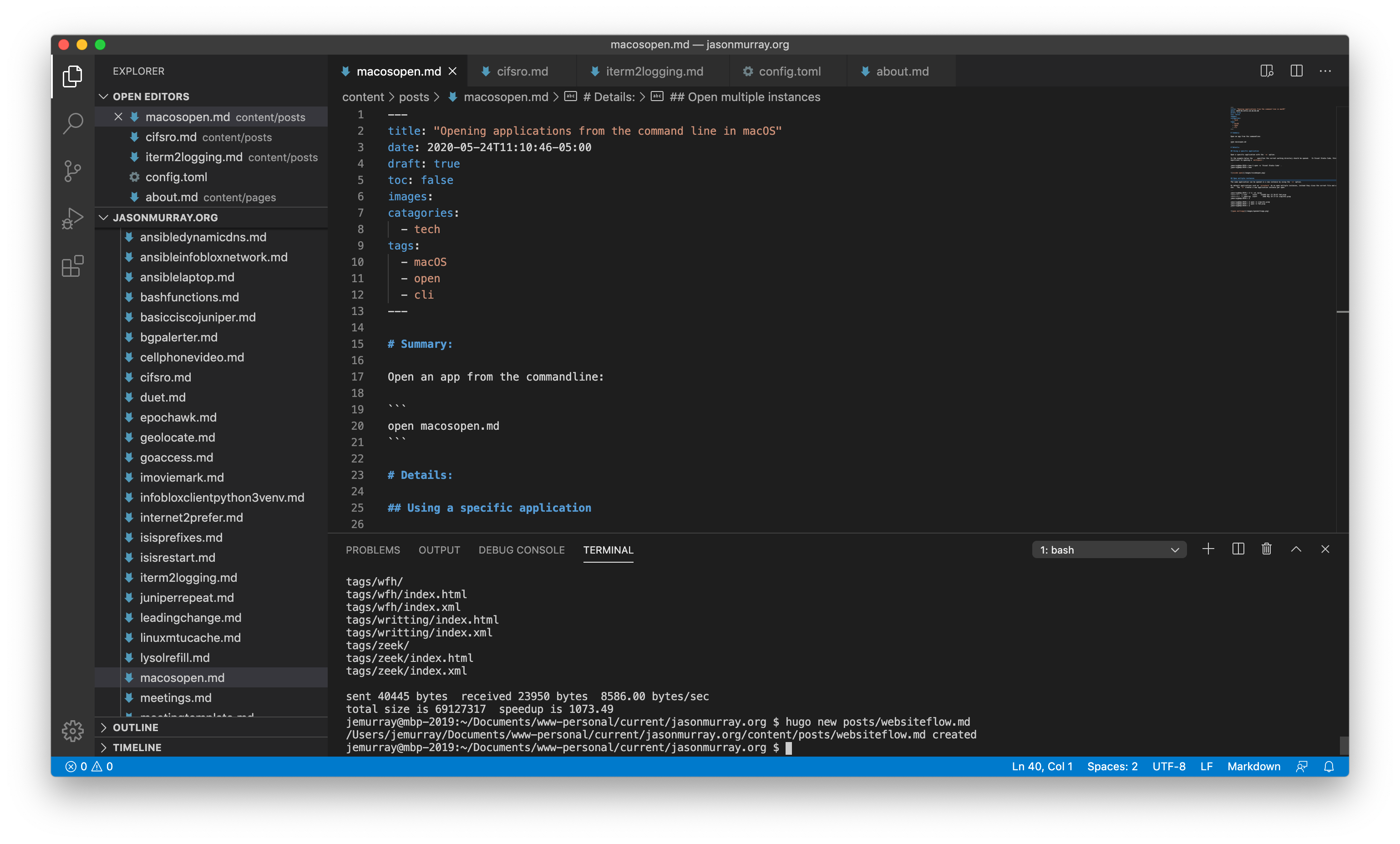
The hugo new command creates a new markdown template under the posts folder:
jemurray@mbp-2019:~/Documents/www-personal/current/jasonmurray.org $ hugo new posts/websiteflow.md
/Users/jemurray/Documents/www-personal/current/jasonmurray.org/content/posts/websiteflow.md created
jemurray@mbp-2019:~/Documents/www-personal/current/jasonmurray.org $
Development Server
To avoid pushing draft data to the live website, Hugo has a built in webserver which renders content locally. This allows the writer to validate the look and feel of the site before going live.
To start the local web server open another terminal in VSC or iTerm and run:
jemurray@mbp-2019:~/Documents/www-personal/current/jasonmurray.org $ hugo -D server
| EN
+------------------+-----+
Pages | 347
Paginator pages | 0
Non-page files | 0
Static files | 74
Processed images | 0
Aliases | 0
Sitemaps | 1
Cleaned | 0
Total in 219 ms
Watching for changes in /Users/jemurray/Documents/www-personal/current/jasonmurray.org/{content,data,layouts,static,themes}
Watching for config changes in /Users/jemurray/Documents/www-personal/current/jasonmurray.org/config.toml
Environment: "development"
Serving pages from memory
Running in Fast Render Mode. For full rebuilds on change: hugo server --disableFastRender
Web Server is available at http://localhost:1313/ (bind address 127.0.0.1)
Press Ctrl+C to stop
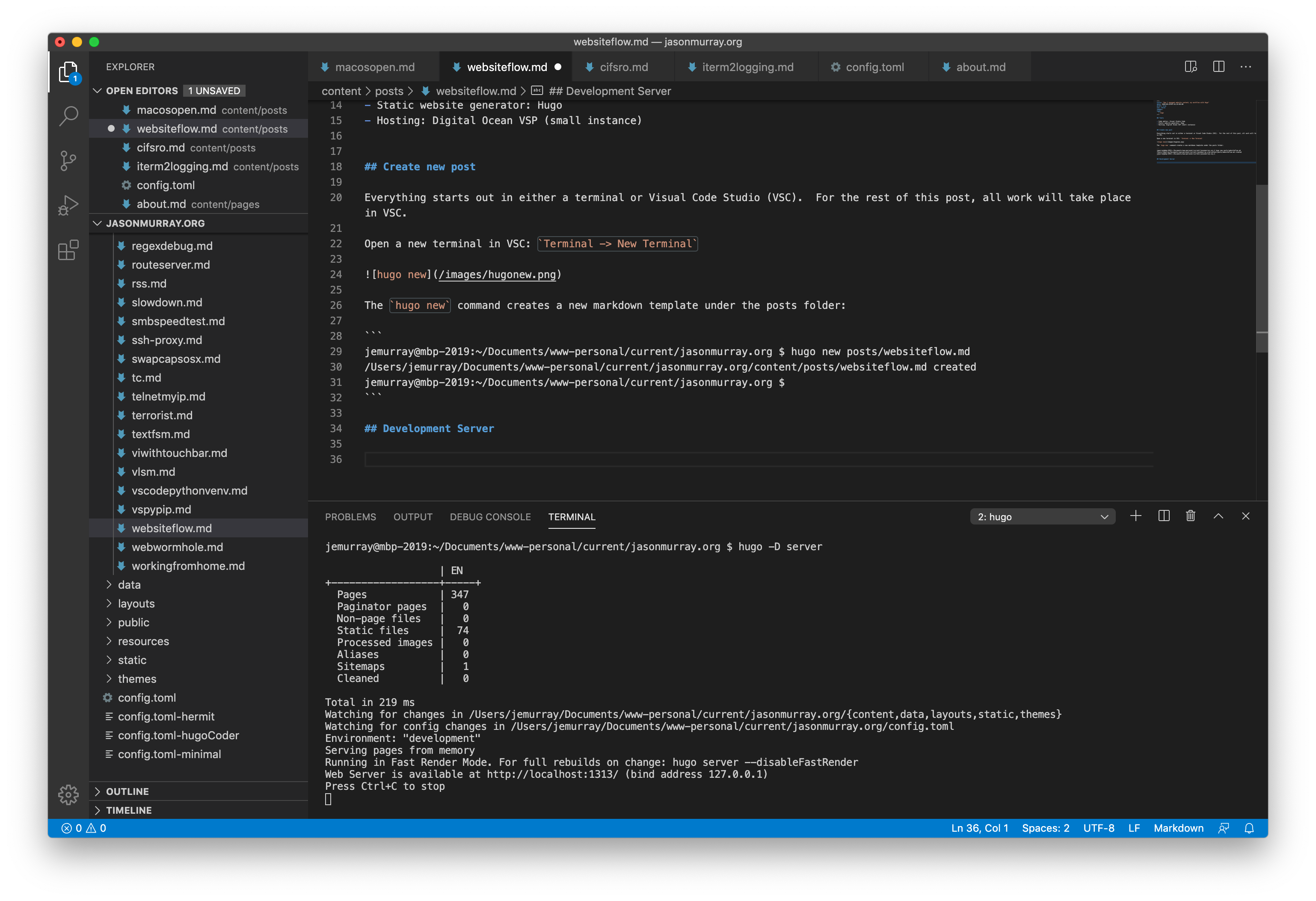
Automatic rebuild
The local development server stays running in the background scanning for changes to any files made under the Hugo directory. When a file is changed, Hugo automatically rebuilds the entire site.
In addition to rebuilding the content, the server also reloads the website:
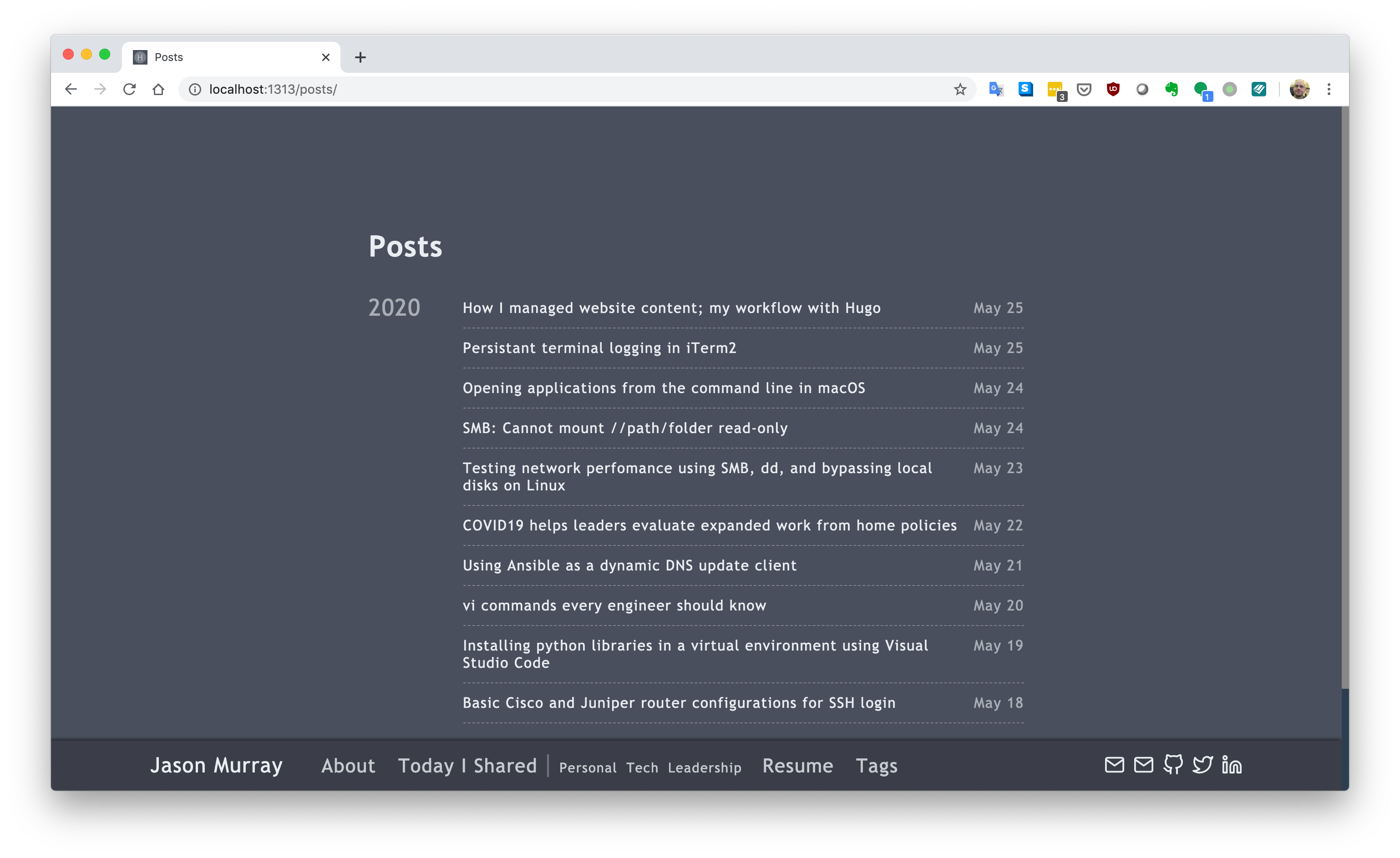
Side Note, if you look at the html code, the following line performs the website reload:
<script data-no-instant>document.write('<script src="/livereload.js?port=1313&mindelay=10"></' + 'script>')</script>
Edit Content
Nothing special here. Use your favorite editor.
iCloud drives syncs files to all my devices. I regularly switch between vi, visual studio code, and Textastic on mobile.
vi:
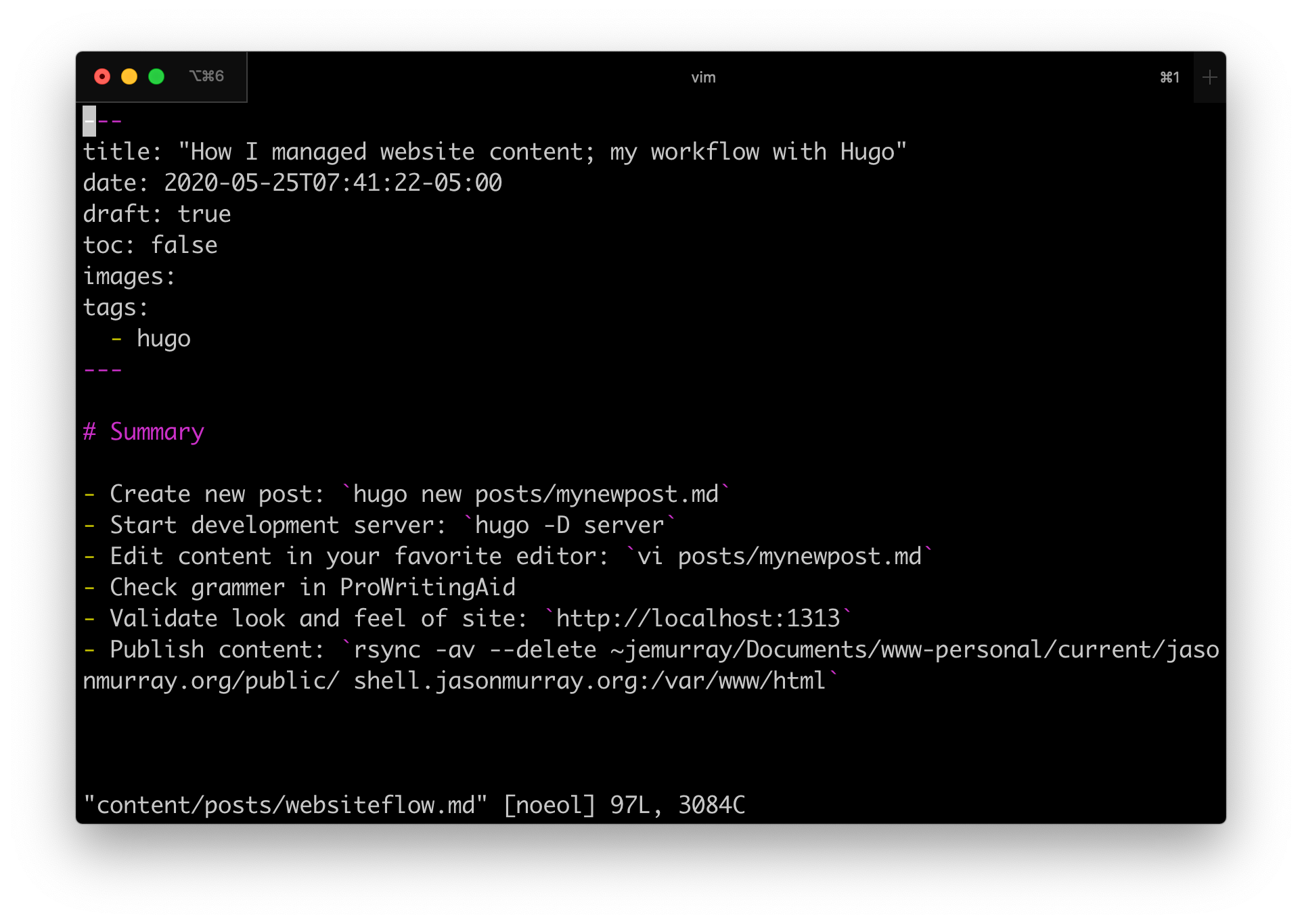
VSC:

Textastic:
The entire layout looks like this on my desktop. Editor is on top, browser in the background, file browsers for moving images around:
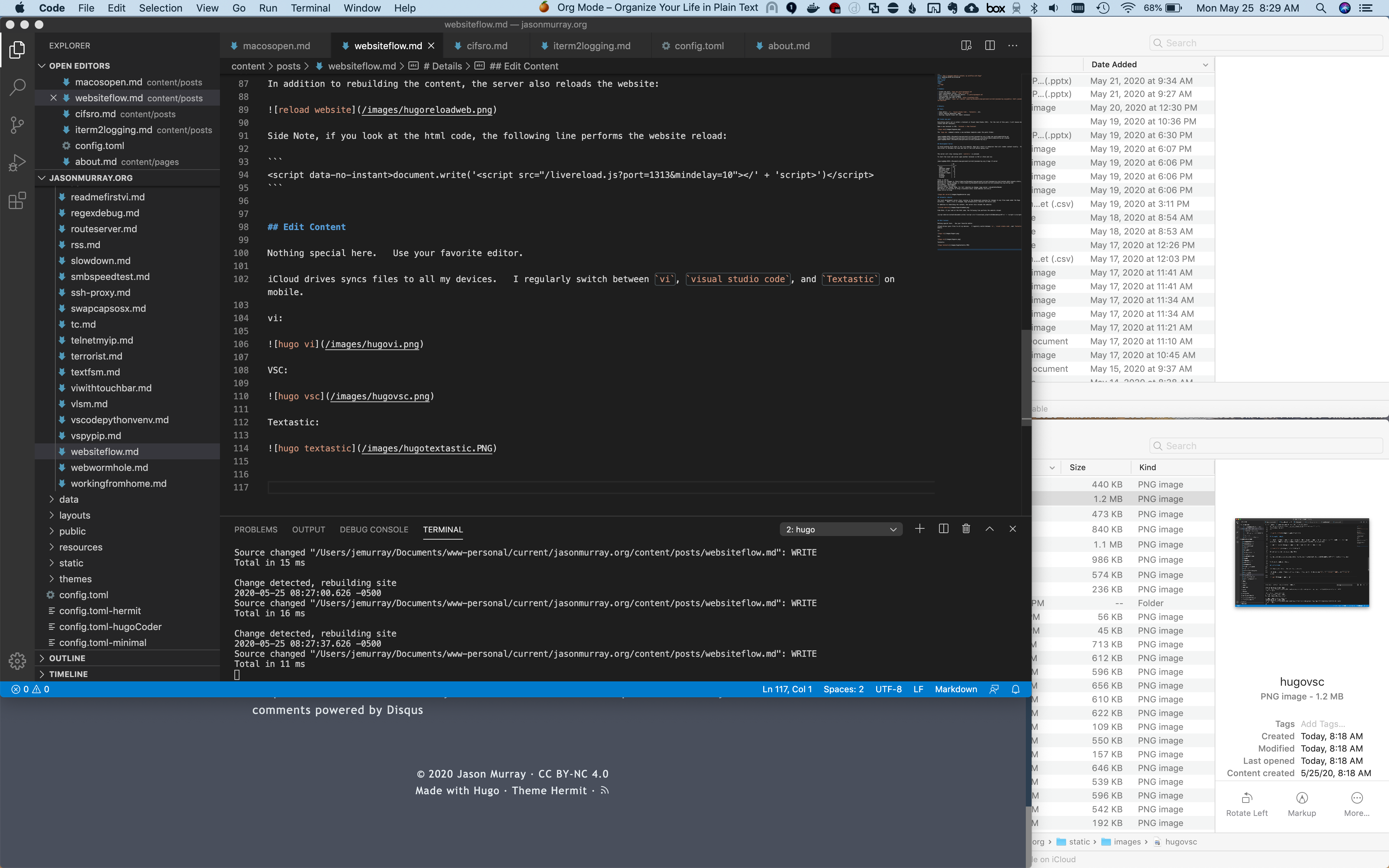
Proofreading
ProWritingAid checks the content before publishing.
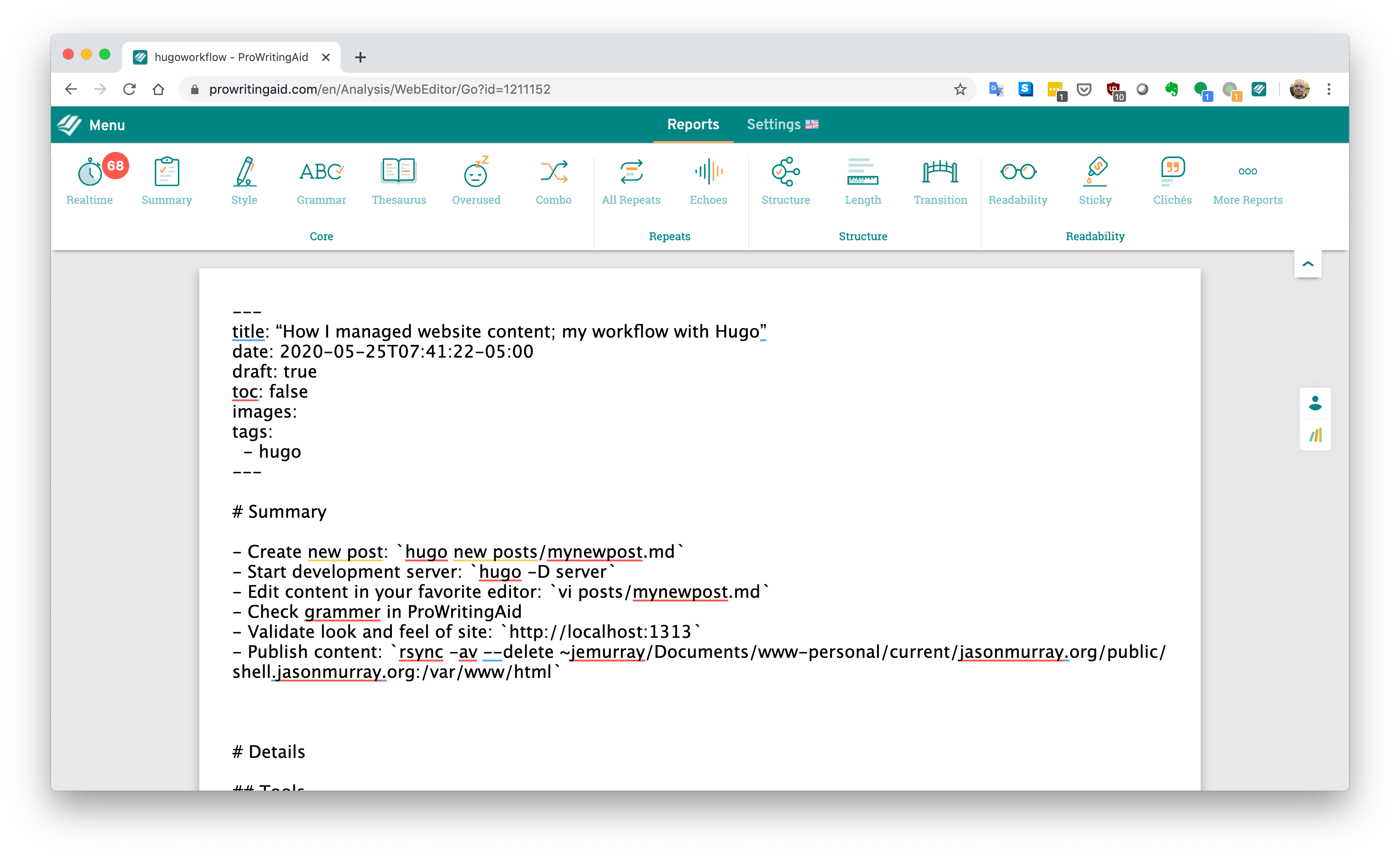
Publishing to the live site
I created a Bash alias to run the rsync command which uploads the website to Digital Ocean:
jemurray@mbp-2019:~ $ grep syncwebsite .bash_profile
alias syncwebsite="hugo && rsync -av --delete ~jemurray/Documents/www-personal/current/jasonmurray.org/public/ shell.jasonmurray.org:/var/www/html"
To upload the site, run: syncwebsite
jemurray@mbp-2019:~/www $ syncwebsite
building file list ... done
./
404.html
index.html
index.xml
sitemap.xml
...
sent 98247 bytes received 21914 bytes 14136.59 bytes/sec
total size is 68175486 speedup is 567.37
Validate
Validate the content on the live site:
